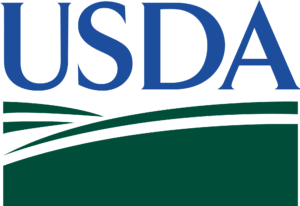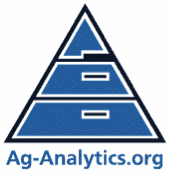Using Whole Farm Revenue Protection to Manage Ups and Downs in the Berry Patch
Strawberries, raspberries, and blueberries are some of the highest value crops grown on farms in New York State on a per acre basis, but it is a challenge to consistently harvest a high yielding crop that meets your revenue expectations. Berry growers face production risks like late frosts in strawberries, bird damage in blueberries, or spotted wing drosophila in raspberries. On the marketing end, risks include lower wholesale prices, rainy weekends that depress u-pick turnout, or greater competition at the farmers market that leads to lower prices. While there are tools available to help reduce the impact of production challenges, there haven’t been many tools available to growers to manage market and price risk in berries.
Whole-Farm Revenue Protection (WFRP) is a new type of crop insurance that was developed to give diversified farms an additional option for risk management. Berry growers can use WFRP to manage multiple forms of risk. Since many berry farms are diversified either by growing more than one berry crop or by growing other fruits and vegetables, WFRP may be a good option for berry farms in New York. WFRP is available in all counties in New York and can cover many crops and livestock products under a single policy. Currently there are no single crop insurance policies available for berries in New York, so WFRP makes crop insurance available to berry growers.
With Whole-Farm Revenue Protection, all farm revenue can be insured together in one policy, and actual revenue determines if there is a loss. Like most federal crop insurance programs, there is a premium subsidy paid by the USDA to the insurer to lower the cost of insurance to growers and to encourage broad participation. The subsidy for WFRP is based on diversification of the farm, so if two are more commodities are covered under the policy, the subsidy will be higher. This is an additional benefit for many berry growers in New York, because growers often grow several crops or commodities. Not only could you cover your berry crops, you could include sweet corn, pumpkins, and tomatoes. Also, if you cover more than three commodities, you are eligible for 80% and 85% coverage levels. Beginning farmers and ranchers can qualify for an additional 10% premium subsidy.
Your “coverage level” is the percentage of your total anticipated revenue covered by your policy. You can choose which coverage level to purchase. A higher coverage level would lead to a higher likelihood of payments, but will also have a higher premium. Lower coverage levels tend to have higher premium subsidies. As an example, say you were expecting $42,000 in revenue from two acres of strawberries; that was the only crop you insured under the policy; and you chose a coverage level of 65%. You would be insuring $27,300 of revenue. Your estimated premium would be $1,802. The total premium cost of your policy would be $4,395, but 59% of that would be paid by the federal government in the form of a premium subsidy. In other words, if your actual revenue dropped below $27,300 due to “insurable causes” such as a drop in price or bad weather, you would receive an indemnity payment. There are several factors that can influence what coverage level is best for a farm and those factors should be reviewed with a crop insurance agent.
Faculty and staff at the Charles H. Dyson School of Applied Economics and Management at Cornell University have a partnership with the USDA Risk Management Agency to deliver crop insurance education in New York State. Crop insurance materials and decision support tools are available at ag-analytics.org to help growers analyze their options for coverage and subsidies for several crop insurance products, including WFRP.
To obtain WFRP, you will need your Schedule F for the past five years (for the 2018 closing date, taxes from 2012-2016). These records determine your Historical Allowable Revenue. If you are a beginning farmer and have been farming in the previous year, three years of taxes qualify. WFRP has provisions for growth and expansion, so if you are in a high growth stage discuss this with a crop insurance agent to ensure you are within the policy guidelines. You will also need the expected revenue for each crop you want to insure. You would work with your agent to project your expected revenue based on your actual expected prices. These may be based, for example, on producer sales records or contracted prices with a wholesaler. Examples of producer sales records are cash register records from you-pick sales, or contemporaneous records which document market sales.
A loss is triggered under WFRP when natural causes cause a crop loss and/or there is a decline in market prices that causes farm revenue to drop below the insured revenue level. If you want to know more about how Whole Farm Revenue Protection can help you manage the specific risks in your berry patch, contact a crop insurance agent. To find a crop insurance agent in your area, go to the RMA Agent Locator. The agent will need your historical tax records and your production plans for the insurance year. More information on Whole Farm Revenue Protection can be found at this USDA Risk Management Agency website. Sales of WFRP policies for New York close on March 15th of each year.
This article is a part of the activities of the New York Crop Insurance Education and Risk Management Project, which is managed by Cornell University in partnership with the USDA Risk Management Agency to deliver crop insurance education in New York State



